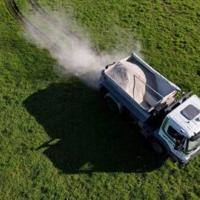According to a significant study published on Wednesday, global emissions of nitrous oxide, a powerful greenhouse gas, are exceeding expectations and jeopardizing climate change goals. The report drew on millions of atmospheric measurements from around the world, revealing a notable increase in human-related nitrous oxide levels. Concerns were raised by researchers that insufficient measures are being taken to control the gas, which is mostly generated by agriculture. Nitrous oxide is said to heat the Earth’s atmosphere 300 times more than carbon dioxide and can persist for over a century. The Global Nitrous Oxide Budget reported a 40 percent increase in emissions in the four decades leading up to 2020, indicating a substantial surge compared to previous estimations made by the IPCC. Lead author Hanqin Tian from Boston College emphasized the need for reducing nitrous oxide emissions to limit global warming to the Paris Agreement target of 2 degrees Celsius, stating, “Reducing nitrous oxide emissions is the only solution since at this point no technologies exist that can remove nitrous oxide from the atmosphere.”
Nitrous oxide, commonly known as laughing gas, is one of the major greenhouse gases contributing to human-driven climate change, alongside carbon dioxide and methane. The gas also contaminates soil, water, and air, and depletes the ozone layer.
– Agriculture main culprit –
The report highlighted agriculture as the primary source of nearly three-quarters of human-related nitrous oxide emissions in the decade leading up to 2020. Other contributors were identified as fossil fuels, waste and wastewater, and biomass burning. Agricultural emissions of nitrous oxide surged by 67 percent in the four decades preceding 2020, largely attributed to nitrogen-based fertilizers and animal waste. While efforts to curb other greenhouse gases are in place globally, nitrous oxide emissions are rapidly increasing with limited measures in effect.
Top nitrous oxide emitters, according to the report, include China, India, the United States, Brazil, Russia, Pakistan, Australia, and Canada, driven by population growth and increased demands on the food sector. The study emphasized the need for new policies to reduce nitrous oxide emissions, as existing efforts may take up to a decade to show results. Despite this, many farmers are already taking action by adopting more precise nitrogen fertilizer usage, genetic modification of crops, improved animal waste management, and sustainable farming practices to reduce emissions.
China, India, the United States, Brazil, Russia, Pakistan, Australia and Canada were the top nitrous oxide emitters, driven in part by their rapidly growing populations and increased demands on the food sector, the report said.
Europe -– once the world’s top nitrous oxide emitter — managed the biggest decrease by reducing the use of fossil fuels. Its emissions related to agriculture are slowly decreasing as well.
Emissions in Japan and South Korea also dropped.
New policies to limit nitrous oxide emissions could take up to 10 years to have an effect, Canadell said.
But many farmers were already seeking to reduce their emissions, including by more precise use of nitrogen fertilisers, genetic modification of crops, better animal waste management and more sustainable farming practices.
“If these emissions were to be reduced by whatever level, it will have a huge impact,” Canadell said.
lec/djw/mtp





